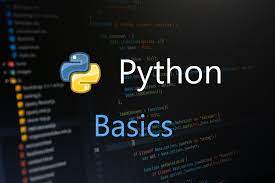Day13 of #90daysofdevops | Basics of Python
 Rahul T
Rahul TTable of contents

Python importance and usage:
Simplicity and Readability: Python is renowned for its easy-to-understand syntax, making it an ideal language for beginners and experienced developers alike. The code is more readable, reducing the chances of errors and making it easier to maintain and collaborate on projects.
Versatility: Python can be used for a wide range of applications, making it a general-purpose language. It's extensively used in web development, data science, machine learning, artificial intelligence, scripting, automation, scientific computing, and much more.
Web Development: Python has several powerful web frameworks like Django and Flask, which enable developers to build robust, scalable, and secure web applications with ease.
Data Science and Analytics: Python has an array of libraries such as NumPy, Pandas, and Matplotlib, which provide efficient data handling, analysis, and visualization capabilities. This makes Python a preferred choice for data scientists and analysts.
Machine Learning and AI: Python's popularity skyrocketed with the rise of machine learning and artificial intelligence. Libraries like TensorFlow, Keras, and PyTorch offer extensive support for developing and implementing ML models.
Automation and Scripting: Python is perfect for automating repetitive tasks and writing scripts to simplify complex processes. It is widely used in system administration and network management.
Rapid Prototyping and Development: The language's simplicity allows developers to quickly prototype ideas and turn them into functional applications in a short amount of time.
Community and Support: Python boasts a large and active community, which means developers can access numerous resources, tutorials, and support when encountering issues or seeking best practices.
Cross-platform Compatibility: Python runs on various platforms, including Windows, macOS, and Linux, making it highly accessible and versatile for different environments.
Integration with other languages: Python can be easily integrated with other languages like C, C++, and Java, allowing developers to leverage existing codebases and libraries.
Open-source and Free: Python is an open-source language, which means it is freely available for anyone to use and modify, making it cost-effective for organizations.
Python's significance in the field of IT is immense due to its ease of use, flexibility, and robustness. Its applications range from web development to data science, machine learning, automation, and more. Learning Python can open up a world of possibilities for IT professionals, making it a valuable skill in today's technology-driven world.
Data types in Python:
For beginners, understanding data types is essential in Python programming. Data types define the type of data that can be stored in a variable and the operations that can be performed on them. Python provides several built-in data types, and here's an introduction to some of the most commonly used ones:
Numeric Types:
int: Represents integer values, such as 1, -5, 1000, etc.
float: Represents floating-point numbers with decimal values, like 3.14, -0.5, 2.0, etc.
complex: Represents complex numbers in the form of a + bj, where 'a' and 'b' are real numbers, and 'j' is the imaginary unit.
Boolean Type:
- bool: Represents boolean values, which can be either True or False. Booleans are used in conditional statements and logical operations.
Sequence Types:
str: Represents strings, which are sequences of characters enclosed within single (' ') or double (" ") quotes. Example: "Hello, World!"
list: Represents lists, which are ordered collections of elements that can be of different data types and are enclosed within square brackets []. Example: [1, 2, 3, "apple", "banana"].
tuple: Represents tuples, similar to lists, but they are immutable, meaning their elements cannot be changed after creation. Tuples are enclosed within parentheses (). Example: (10, 20, "hello").
Mapping Type:
- dict: Represents dictionaries, which are key-value pairs enclosed within curly braces {}. Each element in a dictionary consists of a key and its associated value. Example: {"name": "John", "age": 30, "city": "New York"}.
Set Types:
- set: Represents sets, which are unordered collections of unique elements enclosed within curly braces {}. Example: {1, 2, 3, 4}.
None Type:
- None: Represents a special type with a single value - None. It is used to indicate the absence of a value or to initialize variables.
These data types are the building blocks of Python programs. When you create a variable in Python, you don't need to explicitly specify its data type. Python automatically determines the data type based on the value assigned to the variable.
# Numeric types
age = 25 # int
price = 10.99 # float
complex_number = 2 + 3j # complex
# Boolean type
is_student = True # bool
# Sequence types
name = "Alice" # str
numbers = [1, 2, 3, 4] # list
coordinates = (10, 20) # tuple
# Mapping type
person = {"name": "John", "age": 30, "city": "New York"} # dict
# Set type
unique_numbers = {1, 2, 3, 4} # set
# None type
result = None
As you progress in your Python journey, a good understanding of these data types will enable you to manipulate data effectively and build more complex and functional programs. Happy coding!
Task
Install and check the version of python

Click here for the Python installation process.
Thanks for reading the blog & do share them with someone in need :)
Please share your views and suggestions, they are always welcome.
See you then in the next blog.
Happy learning :)
Subscribe to my newsletter
Read articles from Rahul T directly inside your inbox. Subscribe to the newsletter, and don't miss out.
Written by

Rahul T
Rahul T
In the exciting realm of DevOps, I am enthusiastic about embracing the culture, methodologies, and technologies that drive successful software delivery. With a commitment to lifelong learning and a passion for problem-solving, I am ready to embark on this journey as an aspiring DevOps engineer, making a positive impact and helping organizations achieve their technological goals.